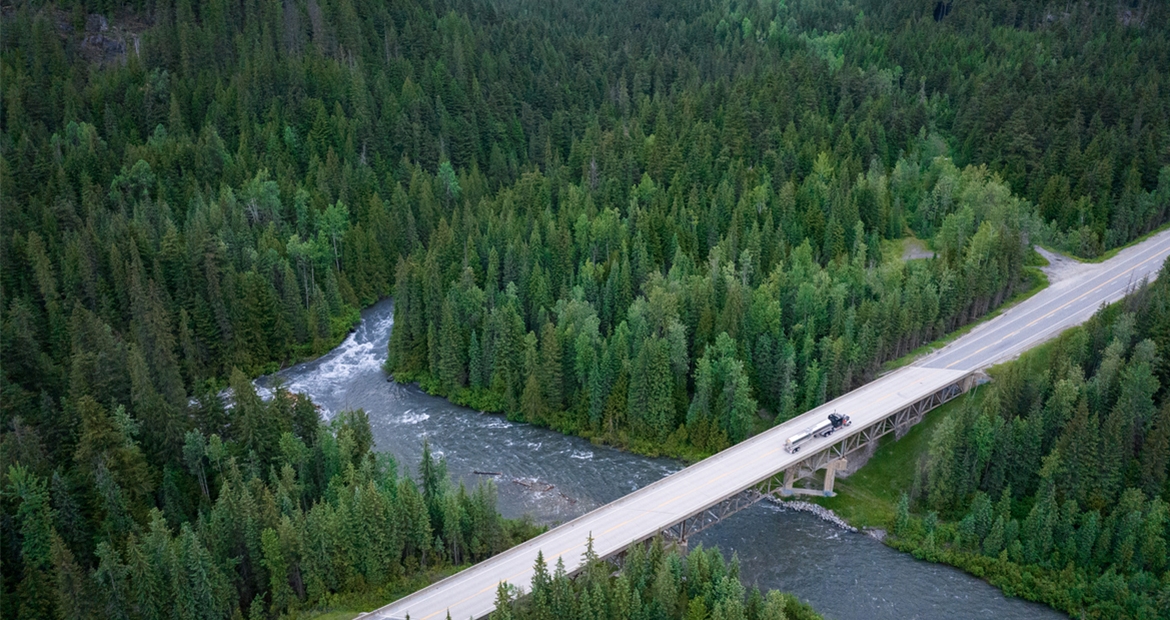The role of hydrogen engines in environmental sustainability
By Jim Nebergall, General Manager of the Hydrogen Engine Business

In the United States, medium and heavy-duty vehicles are responsible for about a quarter of all transportation greenhouse gas emissions. They’re also the cause of about a third of NOx emissions from mobile sources. It’s no wonder the commercial transportation sector is being asked to reduce emissions.
Government regulations and customer demand are driving businesses to reduce emissions, as they recognize the need to ensure long-term sustainability.
Switching to vehicles with hydrogen engines can provide a range of additional benefits in numerous applications.
Hydrogen engines and GHG emissions reduction
Hydrogen engines can deliver over 99% reduction in carbon emissions, making them a promising technology for decarbonizing commercial transportation.
If green hydrogen is used, these vehicles will also have low to zero “well-to-pump” greenhouse gas emissions.
Well-to-pump emissions are the greenhouse gas emissions from the extraction, processing, transportation, and manufacturing of fuel up until it is dispensed at a fuel station.
Gray hydrogen has high well-to-pump emissions. It’s made from methane using a common industrial process. Therefore, gray hydrogen shouldn’t be used to reduce a vehicle’s greenhouse gas emissions.
Green hydrogen, in contrast, is made using processes that don’t release any greenhouse gases. The electrolysis of water using renewable energy, for example, is a way to manufacture green hydrogen.
No fuel is totally free of well-to-pump greenhouse gas emissions. It’s impossible to fully decarbonize all activities connected to supplying fuel. Green hydrogen, though, comes as close to being zero-carbon as any fuel can.
Hydrogen engines and emissions of common air pollutants
Hydrogen combustion product is primary water vapor, simply because hydrogen fuel doesn’t have other elements such as carbon or sulfur. With hydrogen engines specifically, there are no carbon emissions from the fuel itself. Moreover, when green hydrogen is used, there are also no greenhouse gas emissions from the production of hydrogen fuel.
Hydrogen engines can produce small amounts of NOx during combustion, which can be controlled with an aftertreatment system.
Manufacturing and operating hydrogen engines with existing resources
Hydrogen engines are a more environmentally friendly and practical option for many commercial applications than hydrogen fuel cells. For example, hydrogen buses can refuel each night using fueling stations located at the central bus depot.
Inevitably, the use of hydrogen engines in medium and heavy-duty applications will lead to a greater availability of green hydrogen. It will also drive scale in the manufacture of hydrogen storage components used in other hydrogen technologies. As a result, hydrogen engines are well-positioned to prime the hydrogen economy and, indirectly, accelerate the pace of decarbonization.
If you are interested in learning more, don’t forget to check out answers to frequently asked questions around hydrogen engines.
Never miss the latest and stay ahead. Sign up below to receive the latest in technologies, products, industry news and more.
Author Profiles

Jim Nebergall, General Manager of the Hydrogen Engine Business
Jim Nebergall is General Manager of the Hydrogen Engine Business at Cummins Inc. and leads the company’s global efforts in commercializing hydrogen-fueled internal combustion engines. Hydrogen internal combustion engines are an important technology in the company’s accelerated path to decarbonization. Jim joined Cummins in 2002 and has held numerous leadership roles across the company. Most recently, Jim was the Director of Product Strategy and Management for the North American on-highway engine business. Jim is passionate about innovation and has dedicated his Cummins career to advancing technology that improves the environment. He pushed the boundaries of customer-focused innovation to position Cummins as the leading powertrain supplier of choice, managing a portfolio ranging from advanced diesel and natural gas to hybrid powertrains. Jim graduated from Purdue University with a bachelor’s degree in electrical and computer engineering. In 2007, he completed his Master of Business Administration degree from Indiana University.
Related Tags